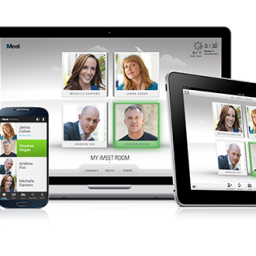Original Post by Kristen Rich
Virtual events are changing the nature of the business world. In addition to saving loads of time and money, they also offer tracking tools and easy accessibility to achieve quality results as well as worldwide exposure. Even though virtual events come with many perks, they can’t replace the experience of face-to-face interactions—no technology can.
So, how do you determine which event route to take? For some cases, having an in-person event can be very effective and is often required, but for others the virtual platform is a much more suitable option.
1. Reach a Larger Audience with a Virtual Event.
When you launch a new product, you want to get the word out in a timely and efficient manner. What’s great about virtual events is they let you do just that! You can connect with large groups of users located halfway around the world in less than 24 hours if needed – something that’d be next to impossible with an in-person event.
Using a virtual platform not only allows you to distribute information quickly, but also lets you tailor it to specific audiences—customers, partners, media and internal sales divisions. Instead of sifting through piles of information, attendees can easily access material that is relevant to them and their needs.
Another bonus is that virtual events allow attendees to directly interact with the organization—they can ask additional questions right on the spot, request more information and potentially move forward in the sales process.
You can then track which attendees were most active during the event (asked questions, read the available product materials, watched demos, etc.) to see who might be the most qualified sales leads.
It sounds like it would be complicated to manage all of this.
2. Reach New Audiences and Markets with Virtual Events
You face possible barriers with in-person events—increasing travel expenses and hectic work schedules often limit who can actually attend. The good news is you can eliminate these problems when using virtual events and share your event with an unlimited number of people—and they don’t even have to leave their desks!
This aspect also expands your overall reach as you can connect with users on a global scale at any time in the day. You’re no longer bound by state lines or travel budgets. Being able to engage with users halfway across the world allows you to build new relationships and target different markets to increase your efforts.
You’re also able to penetrate deeper into organizations, reaching more users and influencers who wouldn’t typically attend an in-person event.
3. Boost Lead Generation by Leveraging Virtual Events.
Using an online platform lets you create real-time interactions via chat and instant meetings with sales prospects, allowing you to find out a prospect’s area and level of interest, answer questions and move the buyer along the process more quickly and effectively than via email or some other asynchronous method of communication.
Another way to gain leads is by providing access to recorded sessions, whitepapers and other resources long after the event has ended. Your content keeps working after the live event is over.
Doing this allows you to reach people who couldn’t attend the live event and also lets those who participated review content they found interesting—they are even able to pass information and links on to their co-workers or other business contacts, which is always a plus!
Content that is widely available, and content that is recommended by a trusted source, leads to more connections and potential prospects.
 4. Use Virtual Events for Employee Training
4. Use Virtual Events for Employee Training
Traditional corporate training sessions can get expensive and time consuming. You have to make sure you pick an ideal training site, have staff available for hands-on training and secure a place for out-of-town attendees to stay.
There’s a lot to worry about, so it often makes more sense to use a virtual platform where you can create customized learning programs and enhance the overall experience.
A Virtual Learning Environment includes a wide range of learning formats and strategies—anywhere from interactive games to on-demand video presentations to Q&A sessions and chat rooms. You’re able to track learner behavior to see what sessions are most engaging and how employees interact with peers, instructors and content.
This provides insight into the training process and what areas need improvement—you want all participants to get the most out of their training. And chances are, you’re already leveraging some form of virtual training in your various development programs, so expanding your virtual training platform to a full virtual campus is a natural and worthwhile extension.
For more insights on changing trends in business collaboration, click here!




